Beyond Tuffeau: A brief overview of the other terroirs of the Paris Basin
No.44 | Terroir Talk
Let me start by saying that this post is incomplete - at least incomplete the way my perfectionist brain would like it to look. Perhaps incomplete isn’t the right word. Maybe a better way to think about this post is it is an opportunity for me to get some information/ideas out that have been swirling around in my head for months, and now they are “down on paper,” I can look to build on and evolve this foundation in the months and years to come as I gather more information through tastings and conversations with vignerons and other professionals in the world of wine and beyond.
I have wanted to talk about the Cabernet Franc terroirs of the Paris Basin1 beyond the Turonian tuffeau chalk for sometime now. While the Turonian tuffeau chalk dominates the most highly regarded vineyard sites across the appellations of Chinon, Bourgueil (and to a lesser extent St-Nicolas-de-Bourgueil,) Saumur-Champigny and Saumur, there are other terroirs/soils that are dotted across these appellations that I believe are the source of some pretty interesting wines that I think are worth talking about.2
However, the reality is I am not a geologist, a pedologist, a vigneron nor a winemaker. I am just a big nerd that has tasted a lot of Cabernet Franc from the Central Loire and believes with my whole heart that Cabernet Franc is capable of showcasing place in the glass. And I have noticed that wines from the below terroirs/soils “feel” different than those from sites influenced by the Turonian tuffeau chalk. But I have no basis of science, nor have I tasted enough of these wines to be able to define precisely what makes these wines different than others. It is simply a feeling I have based on what I’ve tasted to date. And honestly, I could be completely wrong in what I’m feeling or interpreting in these wines.
That said, it is well known that soil impacts the vine’s access to water and nutrients, which impacts its growth, vigour and yield, its precocity, the berry and bunch size, rate and degree of phenolic maturation of the skins and seeds, among other things. And while I don’t know all the pedological details of the below terroirs, they all bring something a little different to the table, and for a vigneron interested in expressing the uniqueness of their terroirs, they may keep these things in mind when making decisions in the cellar.
If nothing else, I think it is important to highlight how diverse the terroirs are across these appellations. Just as not all alluvial soils are created equally, and the Middle Turonian white tuffeau differs from the Upper Turonian yellow tuffeau, some of these lesser known terroirs are worthy of exploring. So I’m using this post as a launch pad to do just that even though I don’t have all the answers, and quite frankly, I probably never will.
So, with that preamble out of the way, let’s dive in, shall we?
Chinon
Terroirs: Known locally at Cornuelles, Perruches and Bournais, these are all different soils dating to the Senonian age of the Cretaceous period or the Bartonian age of the Eocene epoch. The commonality here is these soils are generally quite deep and have a higher proportion of clay in the topsoil and/or subsoil, depending on where you are, and they also generally have flint/silex pebbles or stones throughout.
Where we find these terroirs: Found at higher elevations (80m to 100m a.s.l.) most notably in the communes of Chinon and Ligré, and to a lesser extent La Roche-Clermault and Cravant-les-Côteaux (only in the northwest around the hamlet of La Bouchardiére and northeast around the hamlet of Le Vieux Bourg above the côteaux).

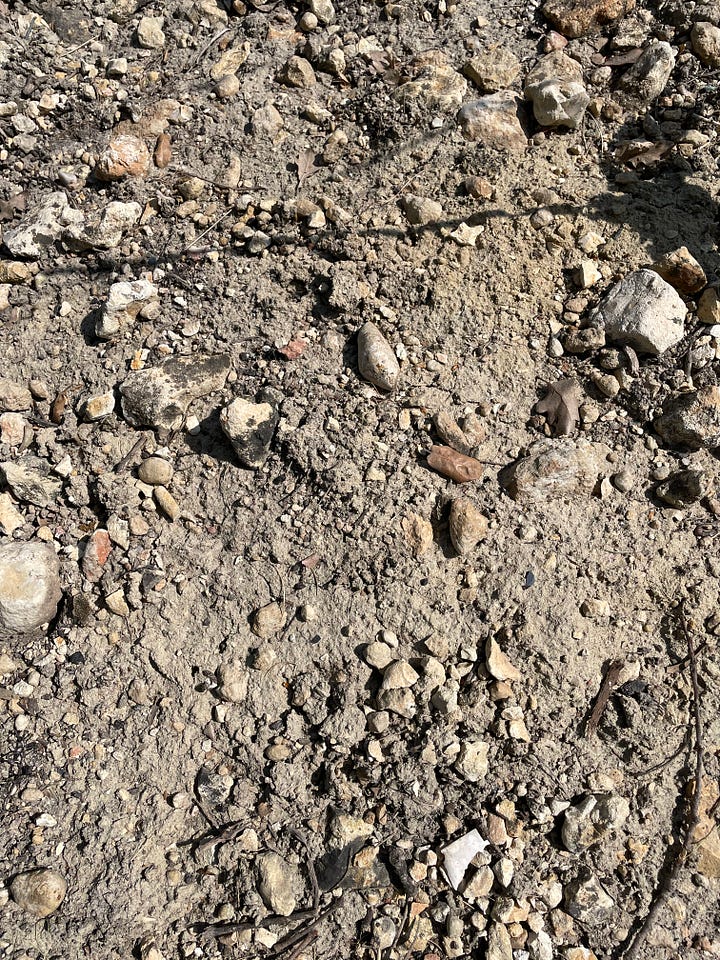
In the Glass: If you take a moment and imagine potters clay or if you’re a gardener who’s worked with heavier clay soils, it is possible to visualize what this sort of dense clay can mean for the finished wine. Clay particles are very tiny and stick or clump together easily. For me, the structure of these wines follows this visualization. They tend to be quite densely packed, with larger volume of very fine, powdery tannins. They can sometimes feel a little sinewy or chewy in their youth, but their structure relaxes over time. But let’s not forget about what the flint brings to the table! If you ask any vigneron who works with these soils, they will tell you that the flint contributes a degree of levity and finesse to these wines which would otherwise present as quite monolithic, particularly in their youth.
Wines to try from these soils:
Couly-Dutheil, Chinon ‘Clos de l'Echo’ (Chinon)
Beatrice et Pascal Lambert, Chinon ‘Le Chêne Vert’ (Chinon)
Beatrice et Pascal Lambert, Chinon ‘Les Perruches’ (Chinon)
Philippe Alliet, Chinon ‘L'Huisserie’ (Chinon)
Domaine de la Noblaie, Chinon ‘Les Chiens Chiens’ (Ligré)
Marc Plouzeau, Chinon ‘Vindoux’ (Ligré)
Domaine du Saut au Loup (Eric Santier), Chinon ‘Le Clos du Saut au Loup’ (Ligré)
Saumur-Champigny
Terroirs: Like Chinon, Saumur-Champigny also has soils dating to the Senonian (C4 below) and Bartonian (e6a below) ages, however, there appears to be a lot more complexity and heterogeneity to these soils. While in Chinon the terroirs from these periods are dominated by heavier clays, in Saumur-Champigny there are pockets that have deeper, clay-dominated soils but there are also areas that have very deep sandy soils as well. In both instances, we can find flint pebbles or stones throughout, but because of the proximity to the Massif Armorcain, these soils can also have a quartz and/or sandstone component to them as well. There are also some areas that have higher iron content bringing a reddish hue to the clays or sands.
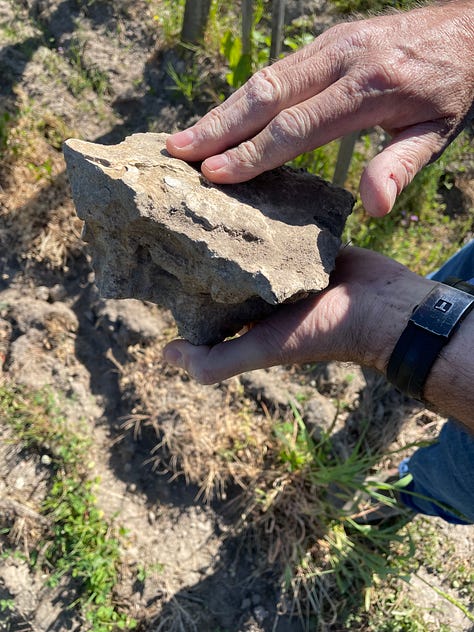
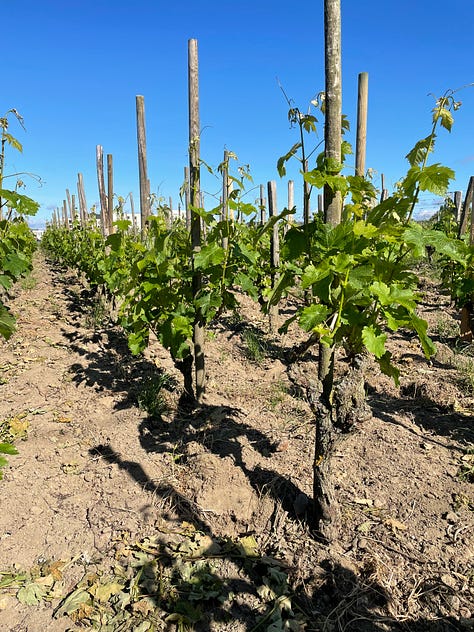
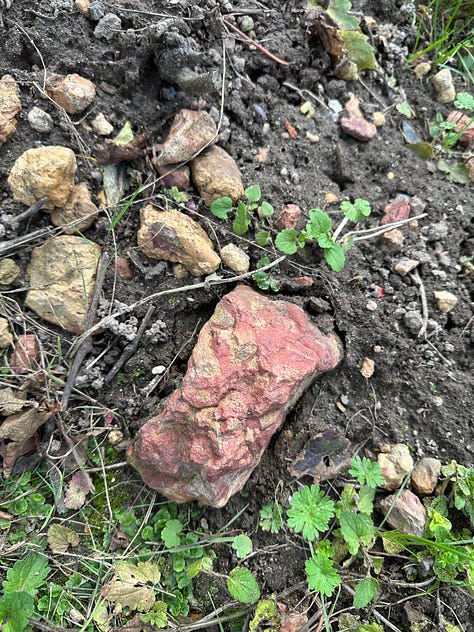
Where we find these terroirs: Found at higher elevations (65m to 85m) in the communes of Saumur, Dampierre-sur-Loire, Parnay, and to a lesser extent Souzay-Champigny. The geological through-line moves northwest to southeast, and the lieux-dits with these soils tend to be set back bit from the Loire (with a few exceptions) in the centre of the commune as opposed to hugging the Loire River on the tuffeau chalk plateau.
In the Glass: Given the nature of the diversity of these soils in terms of depth, texture and location (not to mention different winemaking styles from vigneron to vigneron), it is virtually impossible to identify a notable signature of these soils in the finished wines. That said, if anything, these wines all have a certain generosity and breadth in the glass that I think is notable. I’ve also noted some examples, such as Les Mémoires from Thierry Germain, to be somewhat imposing in their youth requiring quite a bit of time to soften and relax.
Wines to try from these soils:
Domaine des Roches Neuves, Saumur-Champigny ‘Franc de Pied’ (Saumur)
Domaine des Roches Neuves, Saumur-Champigny ‘Les Mémoires’ (Dampierre-sur-Loire)
Château du Hureau, Saumur-Champigny ‘Les Fevettes’ (Dampierre-sur-Loire)
Pierre-Adrien Vadé, Saumur-Champigny ‘Les Chataigners’ (Dampierre-sur-Loire)
Domaines des Closiers, Saumur-Champigny ‘Les Coudraies’ (Parnay)
Domaine de Rocheville, Saumur-Champigny ‘Le Page’ (Parnay)
Terroir: Dating to the Ludian age of the Eocene epoch, Saumur-Champigny has some small, isolated pockets of lacustrine or freshwater limestone. This limestone is harder, more dense and less porous than the Turonian tuffeau chalk. Historically, this difference in density was why the tuffeau chalk was quarried for bricks for buildings (see the photo below), versus the harder lacustrine limestone, which was quarried for cobbles to use for roads and other structures (lacustrine limestone forms the walls on either side of the chimney below). In the vineyards where we find the influence of this freshwater limestone, the topsoil is quite shallow (less than 80cm) and predominantly clayey in texture.
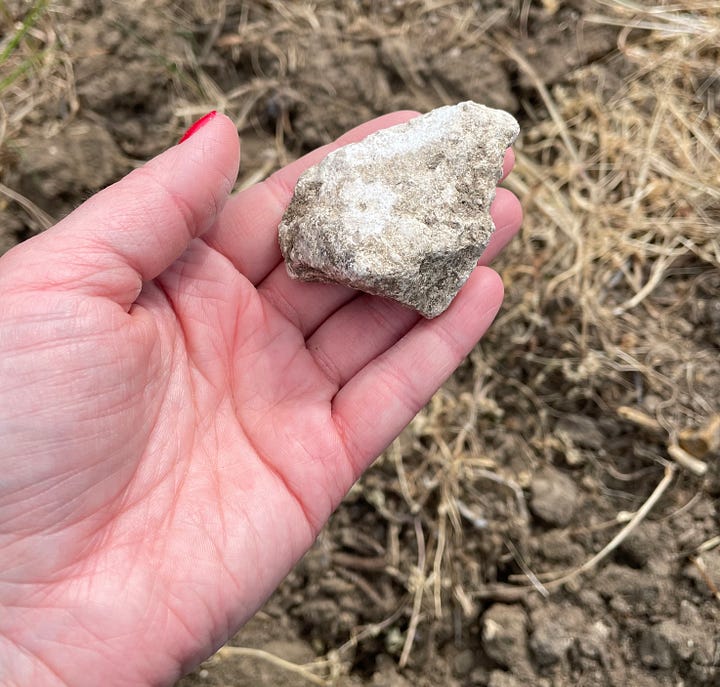
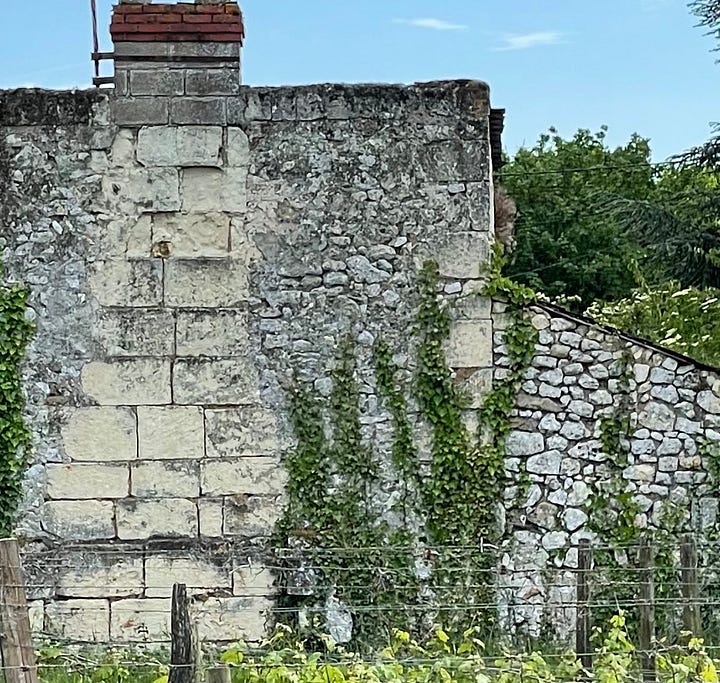
Where we find this terroir: Found at higher elevations (75m to 85m a.s.l.) most notably in the commune of Souzay-Champigny (e6b on the geological map above), around the hamlet of Champigny, with some outcroppings in Dampierre-sur-Loire.
In the Glass: My experience with this terroir comes by way of the wine ‘La Folie’ from Château Yvonne. In my conversation with Mathieu Vallée about this terroir and the expression of the place in the glass, he noted to me that the tannins tend to be more strict or rigid, creating a wine that can come across as a quite upright and structured, and to a certain extent, a bit austere in its youth.
Wines to try from these soils: For the moment, I have only found one example isolating this terroir. But based on the vineyards in the area, there are surely wines being produced from grapes from this type of soil, but it may be that they are being blended with wines from other parcels.
Château Yvonne, Saumur-Champigny ‘La Folie’ (Souzay-Champigny)
Saumur
Terroirs: The Montreuil-Bellay fault runs parallel to the Loire and stretches about 150km, and through the tectonic activity that has taken place here over hundreds of millions of years, it has exposed a different bedrock and soils in several communes in Saumur. These soils date to the Jurassic period in geologically history, and there are two broad groups of these soils that are relevant in the world of Loire Cabernet Franc: flint (silex) and limestone. Across these areas, regardless whether the influence is flint or limestone, the topsoils tend to be more shallow with silty-loam to clayey-loam textures and varying degrees of stoniness.


Where we find these terroirs: The silex de Brossay is concentrated in the communes of Brossay, Doué-en-Fontaine and Vaudelnay. While in the commune of Montreuil-Bellay, we find a few different types of Jurassic limestone, but in general on the left bank of the Thouet River there is Bathonian limestone with silex and on the right bank of the Thouet River there is type of Oxfordian marl.
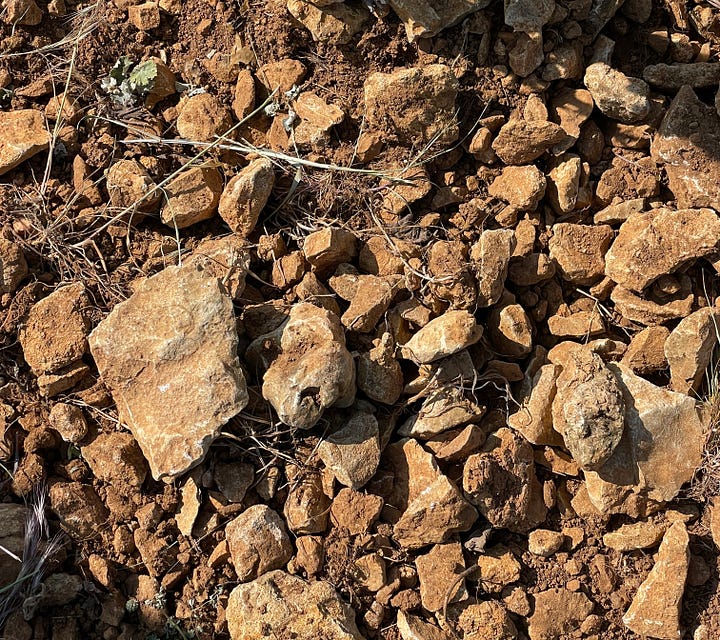
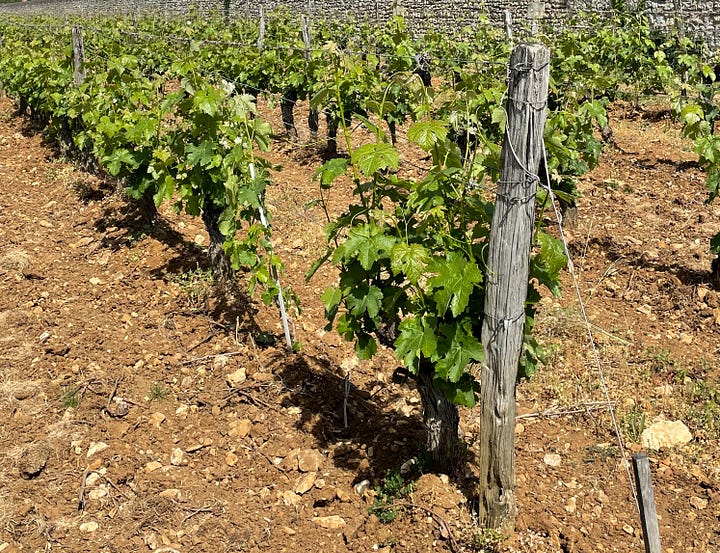
In the Glass: Similar to the lacustrine limestone of Souzay-Champigny, whether it be the silex of Brossay or the marl or hard limestone of Montreuil-Bellay, these rocks are denser than the Turonian tuffeau chalk, with less water holding capacity. The wines I’ve tasted to date from these terroirs are more linear, direct with a certain rigidity to the tannins. These wines also tend to be leaner with less flesh, and can also exhibit a distinct salty, iodine or blood-like mineral undertone.
Wines to try from these soils:
Château de Fosse-Sèche, VDF ‘Eolithe’ (Brossay)
Château de Fosse-Séche, VDF ‘Gondwana’ (Brossay)
Sylvain Dittière, Saumur Rouge ‘Les Cormiers’ (Brossay)
Etienne Bodet, Saumur Rouge ‘Clos Durandière’ (Montreuil-Bellay)
Etienne Bodet, Saumur Rouge ‘Le Clos des Vaudelles’ (Montreuil-Bellay)
Closing Thoughts
As I noted in my introduction to this post, there is still a lot I don’t know about these terroirs and how each of their pedological characteristics influence viticulture and ultimately the finished wines. So, more research is required. But I thought that my experience to date with the wines I have tasted from these terroirs warranted an introduction to the region’s diversity beyond the Turonian tuffeau chalk. If you have any experiences or insights with any of the wines I mentioned above, or if you are aware of another wine or lieu-dit of note from any of these terroirs, I would love to hear your thoughts. Comment below or feel free to send me an email.
The terroirs of the Massif Armoricain of Anjou (ie. the soils collectively known as Anjou Noir) for Cabernet Franc is another exploration all together and one that I haven’t even begun to dive into. But I will, eventually!
You will notice that the appellations of Bourgueil and St-Nicolas-de-Bourgueil are notably absent from this post. From what I can tell, these two appellations only have terroirs that fall into two categories: alluvial soils (recent and ancient alluvium) and the Turonian tuffeau chalk-influenced soils of the slopes (both the Middle and Upper Turonian tuffeau chalks).





A belated entry -- I came across a forgotten bottle of 2004 Chateau de Fosse-Seche Reserve du Pigeonniere this afternoon. Much to my surprise, the wine is in great shape. The cork was pristine. Deep garnet color. Dark red fruits, spice and a little graphite on the nose. A little tannic on first taste, but nice acidity and fruit. After about an hour, the tannins are in balance with the fruit and acid. More profound fruit now on the nose. Seems like this is just hitting its stride. Glad I have one more bottle! I also found 2 bottles of 2008 Fosse-Seche Arcane. This chenin should be interesting to sample, although 1 bottle is a little sticky around the capsule :^(
All-in-all, a nice Christmas surprise!
Season's Greetings!